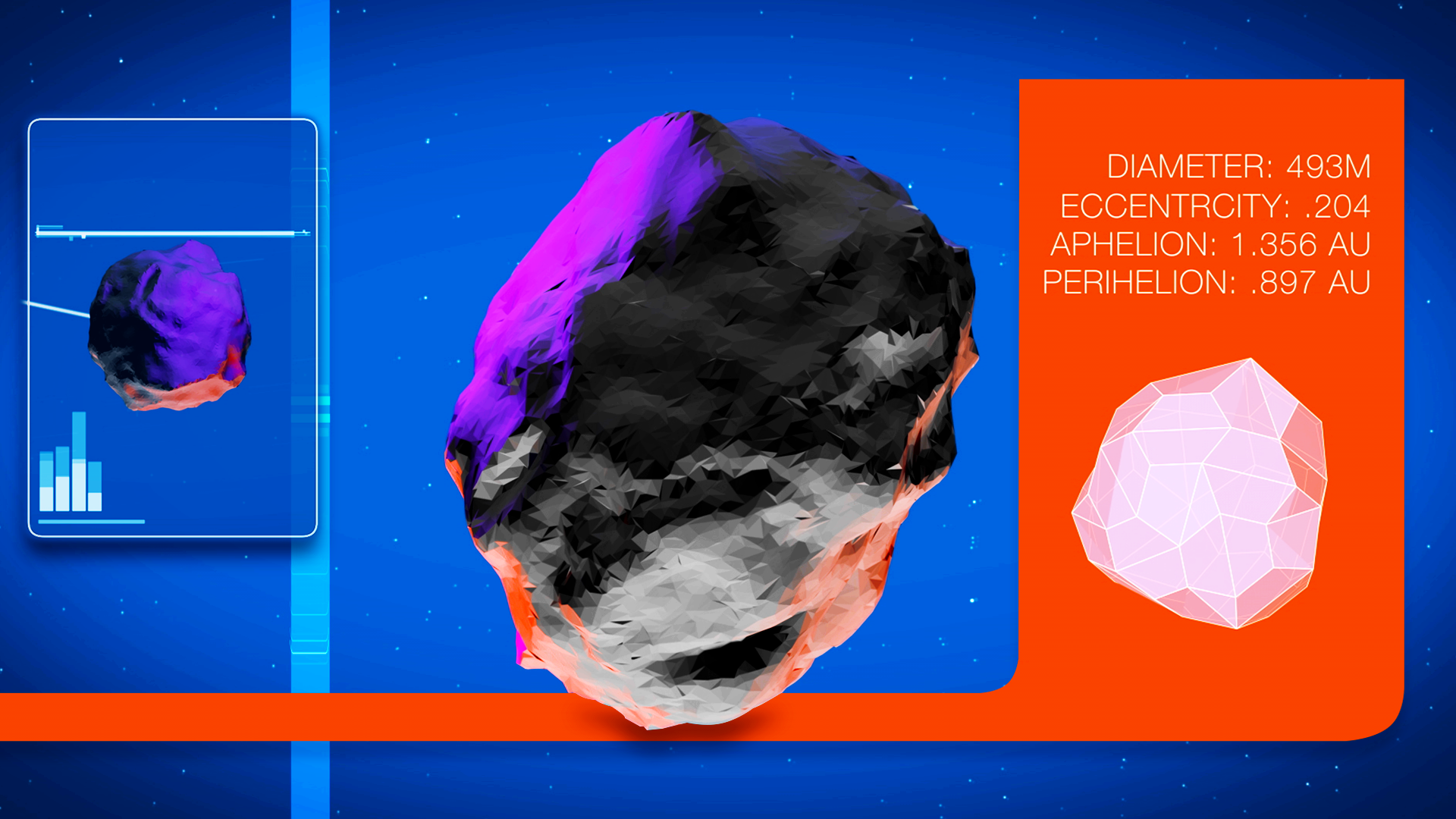Drifting Through Space

Discover how light from the sun can change the path of an asteroid.
Rotating asteroids have a tough time sticking to their orbits. Their surfaces heat up during the day and cool down at night, giving off radiation that can act as a sort of mini-thruster. This force, called the Yarkovsky effect, can cause rotating asteroids to drift widely over time, making it hard for scientists to predict their long-term risk to Earth. In order to learn more about this process on asteroid Bennu, NASA is sending a spacecraft called OSIRIS-REx to make detailed observations of Bennu's shape, brightness, and surface features. These factors are thought to influence the Yarkovsky effect, and understanding how will enable scientists to better predict the orbit of Bennu and other near-Earth asteroids. Watch the video to learn more.
Find out more about the Yarkovsky effect and asteroid Bennu in this video.

Bennu is a rotating space rock that circles the inner solar system in the main asteroid belt.

As the asteroid travels through space, its illuminated surface is warmed by heat (white arrow) from the sun.

As the surface cools, the emitted heat (purple arrows) exerts a small thrust that can modify the asteroid's trajectory over time.

Observations from NASA’s OSIRIS-REx spacecraft will help scientists better predict how the asteroid might move through the solar system.
Credits
Please give credit for this item to:
NASA's Goddard Space Flight Center
-
Animator
- Chris Smith (Self)
-
Scientist
- Edward Beshore (The University of Arizona)
-
Producers
- Chris Smith (Self)
- Dan Gallagher (USRA)
-
Narrator
- Chris Smith (Self)
-
Narration
- Chris Smith (Self)
-
Writer
- Dan Gallagher (USRA)
Release date
This page was originally published on Tuesday, August 18, 2015.
This page was last updated on Wednesday, May 3, 2023 at 1:49 PM EDT.
